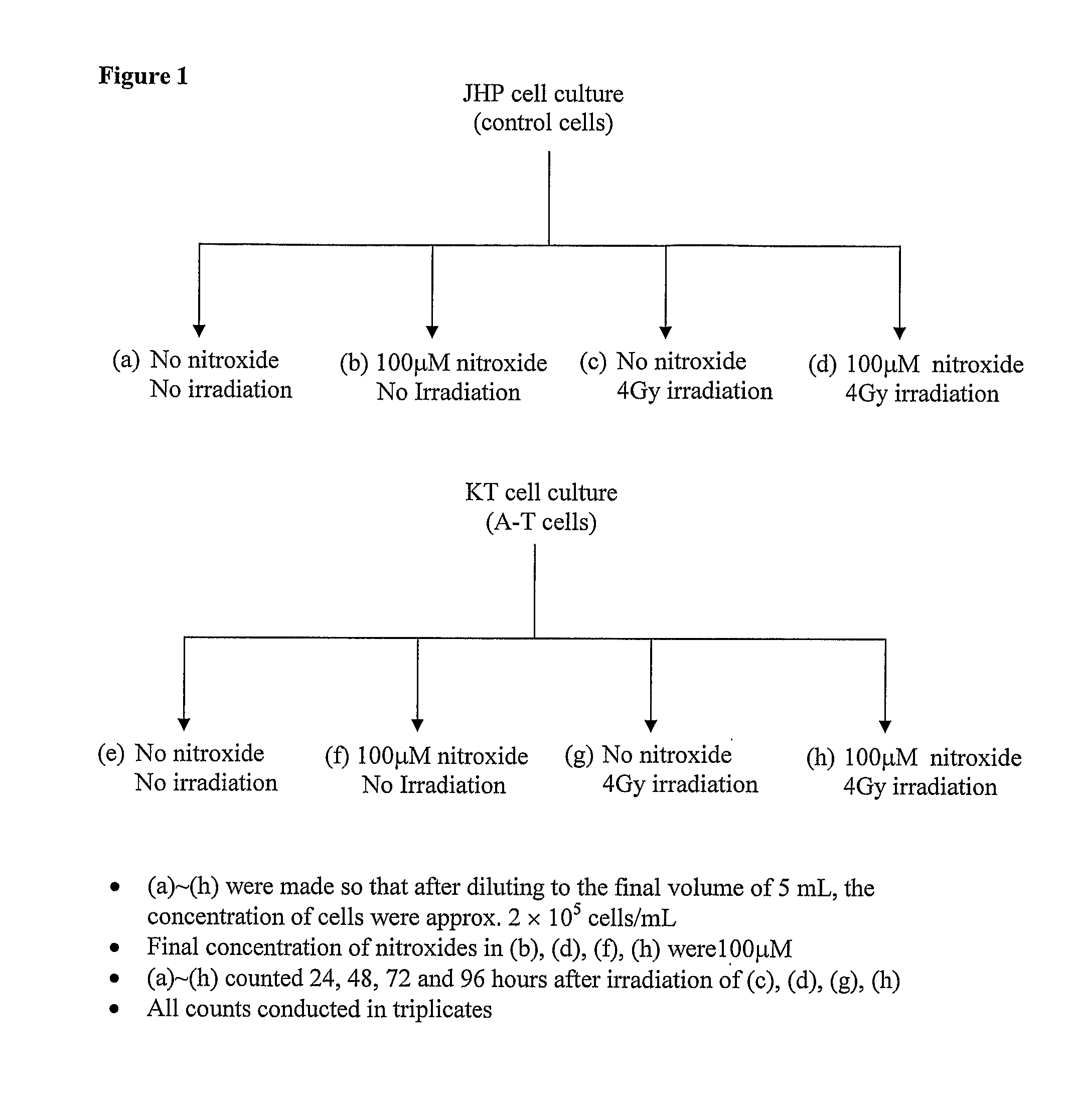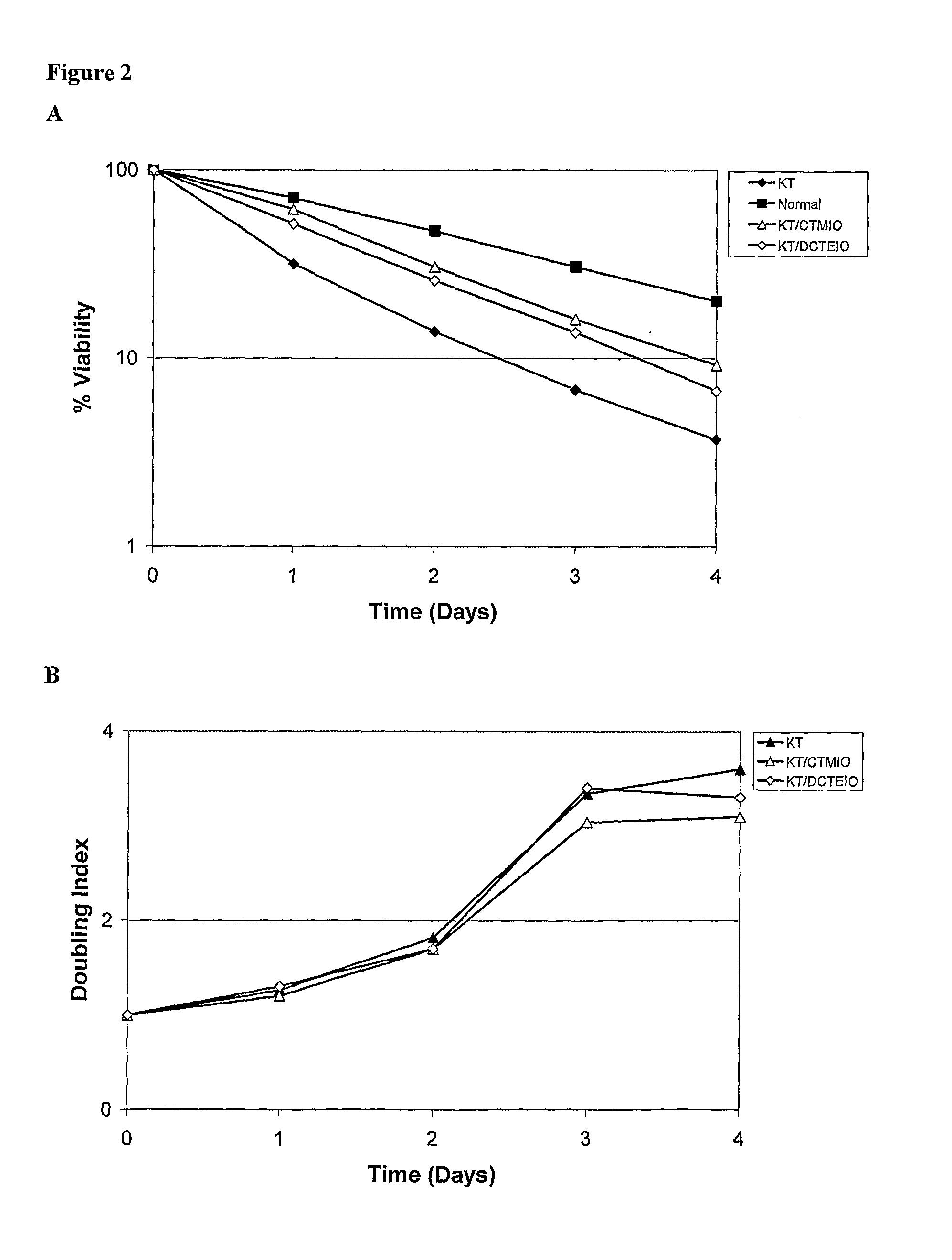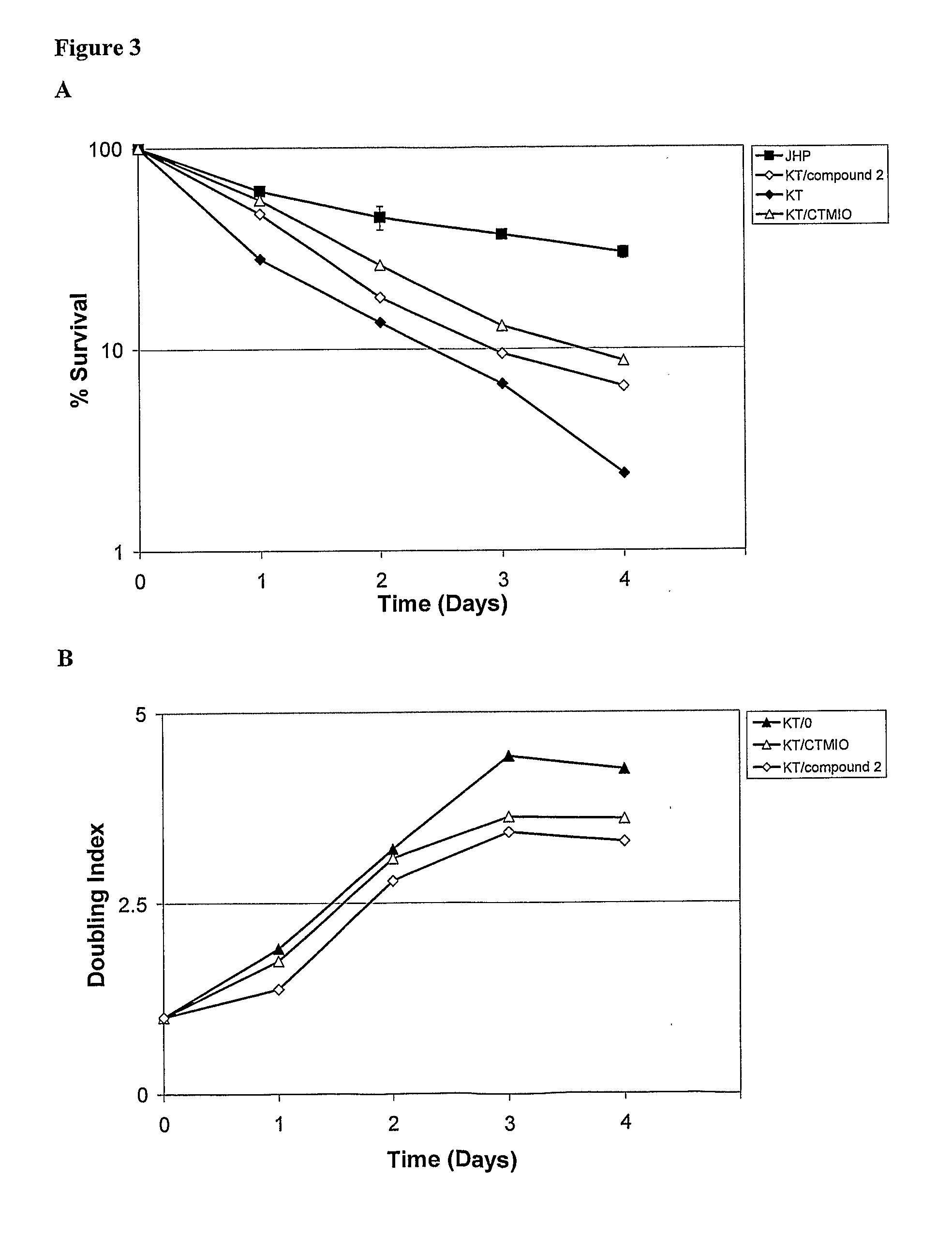Antioxidant compounds and methods of their use
- Summary
- Abstract
- Description
- Claims
- Application Information
AI Technical Summary
Benefits of technology
Problems solved by technology
Method used
Image
Examples
example 1
[0102]
[0103]2-Benzyl-5,6-dimethyl-1,1,3,3-tetramethylisoindoline (10): A suspension of 5,6-dimethylphthalic anhydride (7.8 g, 44.3 mmol, 1.0 equiv) in acetic acid (50 mL) was treated with benzylamine (6.28 mL, 57.6 mmol, 1.30 equiv), warmed to 120° C. and stirred at this temperature for 1.5 h. The mixture was poured into ice / H2O mixture (100 mL) and filtered. The residue was recrystallised from ethanol to yield 10.7 g of 2-benzyl-5,6-dimethylphthalamide as colourless, voluminous crystals (40.3 mmol, 91%) M.p. 138-140° C. 1H NMR (CDCl3, 400 MHz): δ=2.41 (s, 6H, CH3), 4.83 (s, 2H, CH2), 7.23-7.35 (m, 3H, Ar—H), 7.40-7.45 (m, 2H, Ar—H) 7.61 (s, 2H, Ar—H) ppm. 13C NMR (CDCl3, 100 MHz, add. DEPT): δ=20.6 (+, CH3), 41.5 (−, CH2), 124.3, 127.7, 128.5, 128.6 (+, 7C, Ar—C, 130.1, 136.6, 143.7 (Cquat, 5C, Ar—C) ppm. MS (EI): m / z (%)=265 (100) [M+], 247 (78), 236 (58), 222 (67), 133 (59), 104 (67), 91 (44) [C7H7+], 77 (42) [C6H5+]. HRMS (EI): m / z: calcd. for C17H15NO3 [M+]: 265.1103; found 265...
example 2
[0108]
[0109]2-Benzoyl-1,1,3,3-tetraethylisoindoline-5,6-dicarboxylic acid (14): A suspension of 2-benzyl-5,6-dimethyl-1,1,3,3-tetraethylisoindoline (10) (1.50 g, 4.29 mmol) and sodium hydroxide (1.00 g, 25.00 mmol) in a mixture of pyridine (30 mL) and water (46 mL) was treated portionwise with solid potassium permanganate (12.00 g, 76.00 mmol). The mixture was heated at reflux for 4 days. Ethanol (30 mL) was added, the mixture filtered and the obtained filtrate concentrated at reduced pressure. The resulting residue was dissolved in water (80 mL), acidified with hydrochloric acid (2 M aqueous solution) and extracted with diethyl ether (5×100 mL). The combined ether layers were dried (anhydrous Na2SO4) and concentrated in vacuo to give a white solid (1.35 g, 75%). M.p. 244-246° C. 1H NMR (400 MHz, CD3OD): δ=0.7-1.0 (m, 12H, 4×CH3) 1.6-1.75 (br s, 2 H, CH2), 1.9-2.1 (br s, 2H, CH2), 2.4-2.7 (br s, 4H, 2×CH2), 7.4-7.7 (m, 7H, Ar—H). m / z (%)=422 (100) [M−-H]. HRMS (EI): m / z: calcd. for ...
example 3
[0112]
[0113]2-Benzyl-5,6-dibromomethyl-1,1,3,3-tetraethylisoindoline (16): Phosphorus tribromide (0.10 mL, 3.10 mmol) was added slowly to an ice-cooled solution of 2-benzyl-5,6-dihydroxymethyl-1,1,3,3-tetraethylisoindoline (15) (0.50 g, 1.31 mmol) in dry DCM (10 mL) under an argon atmosphere. The solution was stirred on ice for 1.5 h, diluted with water (30 mL) and extracted with chloroform (3×30 mL). The organic layers were washed with brine, dried (anhydrous Na2SO4) and concentrated at reduced pressure. Purification by silica gel chromatography (eluent 30% DCM / 70% hexane) gave 16 as a pale yellow solid (0.32 g, 48%). M.p. 164-166° C. 1H NMR (400 MHz, CDCl3): δ=0.72-0.8 (m, 12H, 4×CH3), 1.48-1.6 (m, 4H, 2×CH2), 1.85-1.95 (m, 4H, 2×CH2), 3.99 (s, 2 H, CH2), 4.71 (s, 4H, 2×CH2), 7.04 (s, 2H, Ar—H), 7.22-7.34 (m, 3H, Ar—H), 7.41-7.46 (m, 2H, Ar—H). 13C NMR (100 MHz, CDCl3): δ=9.6 (CH3), 30.2 (CH2), 30.9 (CH2), 46.7 (CH2), 71.4 (C), 125.0 (Ar—C), 126.1 (Ar—C), 126.7 (Ar—C), 127.9 (Ar—C...
PUM
| Property | Measurement | Unit |
|---|---|---|
| Stress optical coefficient | aaaaa | aaaaa |
| Exposure limit | aaaaa | aaaaa |
Abstract
Description
Claims
Application Information
 Login to View More
Login to View More - R&D
- Intellectual Property
- Life Sciences
- Materials
- Tech Scout
- Unparalleled Data Quality
- Higher Quality Content
- 60% Fewer Hallucinations
Browse by: Latest US Patents, China's latest patents, Technical Efficacy Thesaurus, Application Domain, Technology Topic, Popular Technical Reports.
© 2025 PatSnap. All rights reserved.Legal|Privacy policy|Modern Slavery Act Transparency Statement|Sitemap|About US| Contact US: help@patsnap.com



